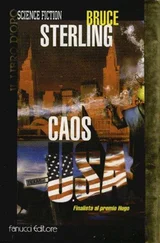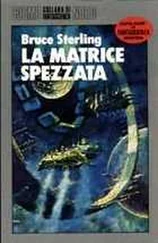Bruce Sterling - Essays. FSF Columns
Здесь есть возможность читать онлайн «Bruce Sterling - Essays. FSF Columns» весь текст электронной книги совершенно бесплатно (целиком полную версию без сокращений). В некоторых случаях можно слушать аудио, скачать через торрент в формате fb2 и присутствует краткое содержание. Жанр: Фантастика и фэнтези, на английском языке. Описание произведения, (предисловие) а так же отзывы посетителей доступны на портале библиотеки ЛибКат.
- Название:Essays. FSF Columns
- Автор:
- Жанр:
- Год:неизвестен
- ISBN:нет данных
- Рейтинг книги:3 / 5. Голосов: 1
-
Избранное:Добавить в избранное
- Отзывы:
-
Ваша оценка:
- 60
- 1
- 2
- 3
- 4
- 5
Essays. FSF Columns: краткое содержание, описание и аннотация
Предлагаем к чтению аннотацию, описание, краткое содержание или предисловие (зависит от того, что написал сам автор книги «Essays. FSF Columns»). Если вы не нашли необходимую информацию о книге — напишите в комментариях, мы постараемся отыскать её.
Essays. FSF Columns — читать онлайн бесплатно полную книгу (весь текст) целиком
Ниже представлен текст книги, разбитый по страницам. Система сохранения места последней прочитанной страницы, позволяет с удобством читать онлайн бесплатно книгу «Essays. FSF Columns», без необходимости каждый раз заново искать на чём Вы остановились. Поставьте закладку, и сможете в любой момент перейти на страницу, на которой закончили чтение.
Интервал:
Закладка:
There were, of course, dissenters from the dream. Some physicists feared that the project, though workable and probably quite necessary for any real breakthrough in their field, was simply too much to ask. Enemies from outside the field likened the scheme to Reagan's Star Wars -- an utter scientific farce -- and to the Space Station, a political pork-barrel effort with scarcely a shred of real use in research -- and to the hapless Space Shuttle, an overdesigned gobboon.
Within the field of high-energy-physics, though, the logic was too compelling and the traditional arc of development too strong. A few physicists -- Freeman Dyson among them -- quietly suggested that it might be time for a radically new tack; time to abandon the tried-and-true collider technology entirely, to try daringly novel, small-scale particle-acceleration schemes such as free- electron lasers, gyroklystrons, or wake- field accelerators. But that was not Big Thinking; and particle physics was the very exemplar of Big Science.
In the 1920 and 1930s, particle physicist Ernest Lawrence had practically invented "Big Science" with the Berkeley cyclotrons, each of them larger, more expensive, demanding greater resources and entire teams of scientists. Particle physics, in pursuit of ever-more- elusive particles, by its nature built huge, centralized facilities of ever greater complexity and ever greater expense for ever-larger staffs of researchers. There just wasn't any other way to do particle physics, but the big way.
And then there was the competitive angle, the race for international prestige: high-energy physics as the arcane, scholarly equivalent of the nuclear arms race. The nuclear arms race itself was, of course, a direct result of progress in 20th-century high-energy physics. For Cold Warriors, nuclear science, with its firm linkage to military power, was the Big Science par excellence.
Leon Lederman and his colleague Sheldon Glashow played the patriotic card very strongly in their influential article of March 1985, "The SSC: A Machine for the Nineties." There they wrote: "Of course, as scientists, we must rejoice in the brilliant achievements of our colleagues overseas. Our concern is that if we forgo the opportunity that SSC offers for the 1990s, the loss will not only be to our science but also to the broader issue of national pride and technological self-confidence. When we were children, America did most things best. So it should again."
Lederman and Glashow also argued for the SSC on the grounds of potential spinoffs for American industry: energy storage, power transmission, new tunneling techniques, industrial demand-pull in superconductivity. In meeting "all but insuperable technical obstacles," they declared, American industries would learn better to compete. (There was no mention of what might happen to American "national pride and technological self- confidence" if American industries simply failed to meet those "insuperable obstacles" -- as had already happened in ISABELLE.)
Glashow and Lederman also declared, with perhaps pardonable professional pride, that it was simply a good idea for America to create and employ large armies of particle physicists, pretty much for their own sake. "(P)article physics yields highly trained scientists accustomed to solving the unsolvable. They often go on to play vital roles in the rest of the world.... Many of us have become important contributors in the world of energy resources, neurophysiology, arms control and disarmament, high finance, defense technology and molecular biology.... High energy physics continues to attract and recruit into science its share of the best and brightest. If we were deprived of all those who began their careers with the lure and the dream of participating in this intellectual adventure, the nation would be considerably worse off than it is. Without the SSC, this is exactly what would come to pass."
Funding a gigantic physics lab may seem a peculiarly roundabout way to create, say, molecular biologists, especially when America's actual molecular biologists, no slouches at "solving the unsolvable" themselves, were getting none of the funding for the Super Collider.
When it came to creating experts in "high finance," however, the SSC was on much firmer ground. Financiers worked overtime as the SSC's cost estimates rose again and again, in leaps of billions. The Japanese were quite interested in basic research in superconductive technology; but when they learned they were expected to pay a great deal, but enjoy little of the actual technical development in superconductivity, they naturally balked. So did the Taiwanese, when an increasingly desperate SSC finally got around to asking them to help. The Europeans, recognizing a direct attempt to trump their treasured CERN collider, were superconductively chilly about the idea of investing in any Yankee dream- machine. Estimated cost of the project to the American taxpayer -- or rather, the American deficit borrower -- quickly jumped from 3.9 billion dollars to 4.9 billion, then 6.6 billion, then 8.25 billion, then 10 billion. Then, finally and fatally, to twelve.
Time and again the physicists went to the Congressional crap table, shot the dice for higher stakes, and somehow survived. Scientists outside the high-energy- physics community were livid with envy, but the powerful charisma of physics -- that very well-advanced field that had given America the atomic bomb and a raft of Nobels -- held firm against the jealous, increasingly bitter gaggle of "little science" advocates.
At the start of the project, the Congress was highly enthusiastic. The lucky winner of the SSC had a great deal to gain: a nucleus of high-tech development, scientific prestige, and billions in federally-subsidized infrastructure investment. The Congressperson carrying the SSC home to the district would have a prize beyond mere water-project pork; that lucky politician would have trapped a mastodon.
At length the lucky winner of the elaborate site- selection process was announced: Waxahachie, Texas. Texas Congresspeople were, of course, ecstatic; but other competitors wondered what on earth Waxahachie had to offer that they couldn't.
Waxahachie's main appeal was simple: lots of Texas- sized room for a Texas-sized machine. The Super Collider would, in fact, entirely encircle the historic town of Waxahachie, some 18,000 easy-going folks in a rural county previously best known for desultory cotton-farming. The word "Waxahachie" originally meant "buffalo creek." Waxahachie was well-watered, wooded, farming country built on a bedrock of soft, chalky, easily-excavated limestone.
Lederman, author of the Desertron proposal, rudely referred to Waxahachie as being "in Texas, in the desert" in his SSC promotional pop- science book THE GOD PARTICLE. There was no desert anywhere near Waxahachie, and worse yet, Lederman had serious problems correctly pronouncing the town's name.
The town of Waxahachie, a minor railroad boomtown in the 1870s and 1880s, had changed little during the twentieth century. In later years, Waxahachie had made a virtue of its fossilization. Downtown Waxahachie had a striking Victorian granite county courthouse and a brick- and- gingerbread historical district of downtown shops, mostly frequented by antique-hunting yuppies on day- trips from the Dallas-Fort Worth Metroplex, twenty miles to the north. There was a certain amount of suburban sprawl on the north edge of town, at the edge of commuting range to south Dallas, but it hadn't affected the pace of local life much. Quiet, almost sepulchral Waxahachie was the most favored place in Texas for period moviemaking. Its lovely oak-shadowed graveyard was one of the most- photographed cemeteries in the entire USA.
This, then, was to become the new capital of the high-energy physics community, the home of a global scientific community better known for Mozart and chablis than catfish and C&W. It seemed unbelievable. And it was unbelievable. Scientifically, Waxahachie made sense. Politically, Waxahachie could be sold. Culturally, Waxahachie made no sense whatsoever. A gesture by the federal government and a giant machine could not, in fact, transform good ol' Waxahachie into Berkeley or Chicago or Long Island. A mass migration of physicists might have worked for Los Alamos when hundreds of A-Bomb scientists had been smuggled there in top secrecy at the height of World War II, but there was no atomic war on at the moment. A persistent sense of culture shock and unreality haunted the SSC project from the beginning.
Читать дальшеИнтервал:
Закладка:
Похожие книги на «Essays. FSF Columns»
Представляем Вашему вниманию похожие книги на «Essays. FSF Columns» списком для выбора. Мы отобрали схожую по названию и смыслу литературу в надежде предоставить читателям больше вариантов отыскать новые, интересные, ещё непрочитанные произведения.
Обсуждение, отзывы о книге «Essays. FSF Columns» и просто собственные мнения читателей. Оставьте ваши комментарии, напишите, что Вы думаете о произведении, его смысле или главных героях. Укажите что конкретно понравилось, а что нет, и почему Вы так считаете.



